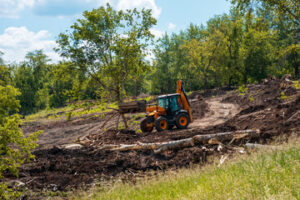The primary goal of SEO is to rank higher in search engine results. It also involves converting those who click on the results into customers. To do that, you need to build trust with your audience.

Start by creating a list of sites that accept guest posts. Then, find the proper point of contact for each site. Visit https://www.rankboss.com/ to learn more.
Guest blogging is one of the oldest link-building strategies around, and for good reason: It’s still a powerful way to improve your SEO. Securing posts on high-quality sites that are relevant to your audience will transfer “link juice” to your site, boosting its ranking in search results. However, it’s important to use this tactic in conjunction with other link-building strategies, such as data-driven content and resource pages. Otherwise, you could be sending your search engine rankings backwards.
To improve your chances of getting a guest post accepted, prepare a well-written and thoughtful pitch. Include writing samples and a short summary of your background, expertise, and experience. Also, be sure to follow the host website’s guidelines for guest posting and ensure that your topic fits the site’s editorial style.
It’s also important to include a link to your website in your pitch. This helps you establish credibility and builds trust with the editor or site owner. You can also include a short bio and a photo of yourself to increase your chances of being accepted.
Guest posting can be a valuable tool for businesses, regardless of their size or industry. In addition to attracting targeted traffic and building brand awareness, it can help you build relationships within your industry and create opportunities for future partnerships or repeat contributions. Additionally, if you’re able to attract attention from the host site’s audience, they may share your work on their social media and drive additional traffic to your site.
In order to maximize the impact of your guest post, you should use a variety of anchor text. Exact-match anchor text is now considered spammy, so try to avoid it. Instead, use branded terms, natural phrases, or contextual links to get the most value out of your guest post. Additionally, try to target blogs that have a high domain authority and an engaged audience. If you can, find blogs that are in your niche or industry. This will make it easier to target your audience and achieve your marketing goals.
Traffic
Traffic is a key metric for any business, and boosting your site’s search engine optimization (SEO) is a great way to increase traffic. Using guest posts, you can build high-quality backlinks that will help your site rank higher in search results. However, you should use this strategy as part of a wider marketing plan to drive organic traffic.
The primary benefit of guest blogging is that it expands your reach and exposes your content to a new audience. This can lead to conversions, and it also establishes you as an authority in your niche. In addition, it can help you build relationships with website owners and editors. These connections can lead to future opportunities, such as partnerships or repeat guest posts.
Guest posting is one of the oldest link-building strategies out there, but it still has a lot to offer for marketers. It’s important to focus on quality over quantity, and find sites that are a good fit for your content. It’s also a good idea to vary your outreach techniques to ensure you get the most out of each article.
Whether you’re a beginner or an experienced blogger, it’s essential to track the performance of your campaigns. You can do this by using tools like Google Analytics and Backlink Manager. These tools will allow you to see the impact of your guest post on your SEO, website traffic, and engagement. Backlink Manager will even let you know if your backlinks have been removed or changed to no-follow, so you can keep an eye on your campaign’s progress.
As you continue to publish guest posts on popular websites, you can build a network of high-quality backlinks that will improve your website’s SEO and ranking. However, you must monitor your performance and make adjustments to keep up with changes in the SEO landscape. For example, if your competitor begins to outrank you in search engines, you may need to adjust your content strategy or change your keyword selections. Also, you should remove spammy links and fix broken ones to avoid penalization by search engines.
Brand awareness
Brand awareness is an important component of search engine optimization (SEO), and guest posting is one of the most effective ways to build brand awareness. It exposes your content to a new audience and can drive targeted traffic to your website. It can also help establish you as an authority in your niche. By publishing on well-established websites, you can increase the reach of your content and gain a competitive advantage.
To ensure that your guest post is of high quality, it is essential to research the topic thoroughly. This will increase your chances of getting accepted by the website and will also make your article more compelling. You should use statistics, facts, and real-life examples to support your points. Avoid using outdated data, as this will not appeal to readers. If possible, include visual representations of the information, such as charts or graphs, to make it easier for readers to understand and digest.
Before you submit your guest article, be sure to check the website’s editorial guidelines. Then, craft a thoughtful, personalized pitch that explains why your article will be valuable to the website’s audience. It’s also important to identify the content gaps on a site to determine whether your content is relevant.
Once you have submitted your article, wait patiently for a response. It may take a few weeks before the editor responds, but don’t get discouraged if you don’t hear back right away. You can always politely follow up with a quick and friendly email.
Once your article is published, be sure to track the performance of your campaign with tools like Backlink Manager. This will help you evaluate the long-term value of your investment and measure the impact on your SEO. Backlink Manager allows you to log your guest post opportunities, and you can use the tool’s tools to monitor links for status changes, such as being removed, changed to no-follow, or pointing to the incorrect URL. You can also create reports to analyze the performance of your campaigns and optimize them for future success. This will help you achieve better results and improve your ROI.
Authority
As part of the seo process, it’s important to focus on boosting your authority by writing guest posts on reputable industry-specific platforms. These sites already have a large following of loyal readers, so your content is more likely to be well-received and impactful.
In order to maximize the value of your guest posts, you should always make sure that the content you submit is top-notch. Hire a professional editor to double-check your facts, improve readability and flow, flag any potential issues, and fix embarrassing typos. It’s also a good idea to use tools like Moz and Ahrefs to evaluate the domain authority and relevance of your potential platforms. These tools will help you identify opportunities that are worth your time and effort. They’ll also give you a clear picture of your performance metrics, including backlinks and organic traffic.

